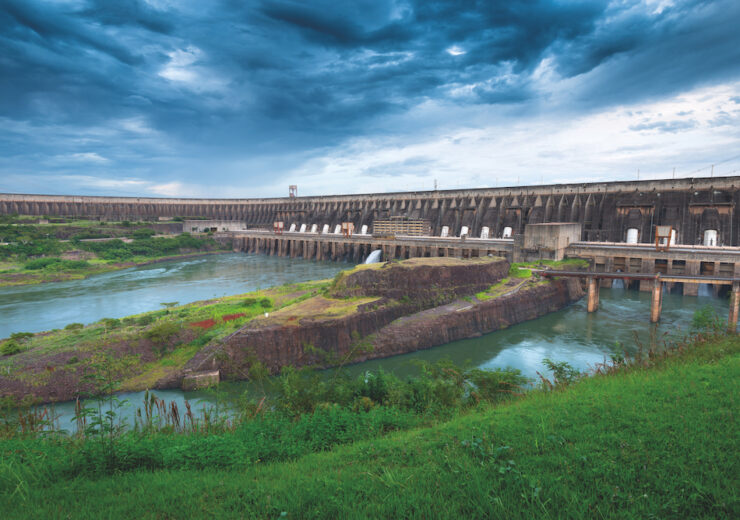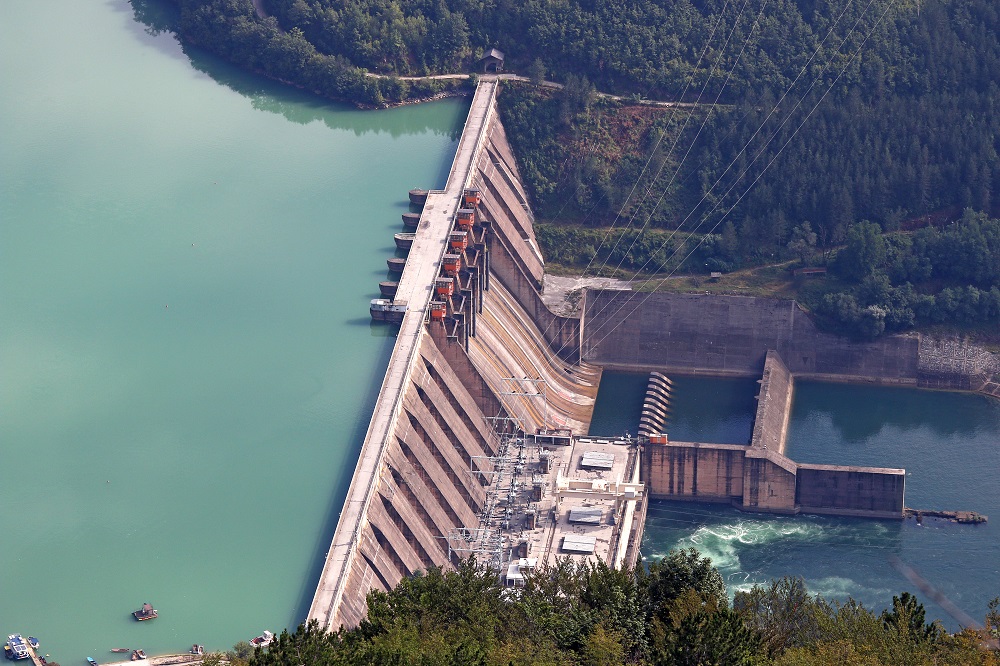Analysts from the International Hydropower Association discuss the importance of infrastructure modernisation, and the benefits it can deliver

Itaipu Hydroelectric Dam on the Parana River at the border of Brazil and Paraguay (Credit: Jose Luis Stephens/Shutterstock)
As a mature technology, hydropower has an ageing fleet with nearly half of its global capacity more than 30 years old. In regions like Latin America and Africa, this raises the importance of modernisation and delivering innovations to increase resilience and improve efficiency, write Cristina Diez Santos and María Ubierna, analysts from the International Hydropower Association (IHA).
Hydropower is the largest source of renewable energy. In 2019, it provided almost 60% of renewable electricity generation and 16% of total electricity generation. According to IHA’s 2020 Hydropower Status Report, installed capacity reached 1,308 gigawatts (GW) globally with more than 4,300 terawatt hours (TWh) generated in 2019.
In addition to developing new projects, future growth in worldwide installed hydropower capacity is expected to come from the modernisation of existing facilities. The main drivers behind the need for modernisation range from upgrading ageing equipment, to improving energy performance, reducing environmental impacts, and complementing variable renewables like solar and wind.
Two regions where there is significant opportunity for hydropower modernisation are Africa and Latin America and the Caribbean (LAC).
Hydropower in LAC region
In Latin America and the Caribbean, hydropower accounts for almost half of total installed capacity and is the main source of electricity in many countries. Its development peaked in the decades from 1960 to 1980 with large-scale hydropower plants, including the three binational projects in the region.
During these decades, the installed capacity of the region increased five-fold. Currently, more than 100GW of installed capacity is more than 30 years old, out of 1,96GW.
Current projections identify that installed hydropower capacity will continue to grow to meet future electricity demand. Considering that an important part of the hydropower fleet in the LAC region was developed more than two decades ago, attention is turning to the modernisation needs of the existing fleet, as well as the sustainable development of new projects.
Hydropower in Africa
By contrast, the African region has the highest untapped hydropower potential globally, with only 11% currently utilised. In 2019, 906 megawatts (MW) of hydropower capacity was put into operation reaching to 37GW of installed hydropower capacity. A total of 23GW is over 20 years old.
While hydropower installed capacity in Africa has grown in the past ten years at an average annual rate of 4.4%, in terms of generation the average annual growth reached only 2.4%.
Climate change effects and the ageing of the hydropower fleet, with more than 60% of installed capacity over 20 years old, are two of the main drivers for the drop in capacity factors.
In addition, energy demand is growing twice as fast as the global average. Despite the strong progress of African governments in addressing energy poverty, the continent still needs to add 20 million people to the electricity network every year from now to 2030.
Why hydropower modernisation is important
In Latin America and Africa, as well as other regions around the world, the owners and operators of hydropower projects are actively weighing up the benefits of modernising their systems.
The term modernisation includes any type of rehabilitation, renovation or update of systems, equipment, and civil infrastructure of a hydropower plant, which brings it to optimal conditions to operate within the new and changing demands of the electrical systems.
This includes providing increased generation output, climate resilience and adaptation, and ancillary services to enable the penetration of intermittent renewable energy sources into the system.
In terms of plant performance and improvement of the return investment, modernisation helps increase the plant availability, reliability, plant lifetime and safety. It also allows for reducing operation and maintenance costs.
From the environmental and social perspective, bringing additional capacity and efficiency comes at no environmental cost. Moreover, modernisation can deliver additional benefits, such as providing greater flexibility services to support higher penetration of variable renewables, building resilience to the system to address more frequent droughts and flood events.

With rehabilitation, the greatest advantage is that many of the environmental and social impacts have already been mitigated, in addition to being high-return investments. This is an aspect of great relevance, due to the need for base generation support in systems and considering the current challenges for the development of new hydroelectric plants, particularly with large reservoirs.
In the Latin American and Caribbean region, a recent sector consultation undertaken by IHA and the InterAmerican Development Bank (IDB) showed that despite the clear drivers for modernisation, more investment and regulatory support is urgently needed to encourage projects.
The joint study by IHA and IDB identified the modernisation potential in terms of the number of plants and installed capacity. This considered a total of 127GW, with hydropower plants older than 20 years old and above 10MW. The results showed that an investment of approximately $33.5bn is required to modernise the plants.
Hydropower modernisation for climate adaption
Adaptation to climate change needs when modernising a hydropower asset is also a key consideration. Vulnerability studies like one carried out by IDB for Central America and the Andean region, and by the International Energy Agency (IEA) in Africa, are important to determine possible impacts on the inflows, and the reliability and safety of the plant.
Hydrological variability affects plant factors, and thus, the firm energy committed to the grid.
A modernisation project can consider a change in the operating regime and open the opportunity to include infrastructure resilience measures. IHA’s Hydropower Sector Climate Resilience Guide offers a methodology for identifying, assessing and managing climate risks to enhance the resilience of new and brownfield hydropower projects.
Further work is needed to guide the future management of ageing dams around the world and support the huge investment decisions that will have to be made. Important directions include reservoir longevity issues and the necessity of upgrading and retrofitting ageing dams.
This should extend to include a thorough assessment of climate change impacts on ageing and determination of ecosystem responses to the ongoing loss of reservoir functionality.
The enhancement of climate resilience in hydropower projects can bring multiple benefits. Resilient hydropower systems can support with uninterrupted electricity supply, minimise losses as well as save costs from climate impacts.
In most parts of Africa, investment in resilience measures, such as enhancing reservoirs and improving generation efficiency, could help utilise save costs for recovery and reduce losses from the underutilisation of hydropower.
As markets evolve, power flexibility and energy storage are becoming increasingly essential and strongly support the need for hydropower modernisation.
Many generators are looking for ways to improve frequency control and other ancillary services to stabilise the grid – this can require hydropower units to operate over an extended range, requiring quicker response ramping, part-load and stop/start capabilities among other improvements.
Covid-19 and mobilising investments
Most recently, the health and economic crises caused by Covid-19 have pushed countries further away from achieving universal energy access. Shifting government priorities has slowed access programmes.
Sub-Saharan Africa has been particularly hard hit, and the IEA currently estimates that the population without access to electricity could increase in 2020 for the first time since 2013. The LAC region has also not escaped the impact of Covid-19. Analysis by IDB shows that electricity demand reduced from 10%-30% in some countries.
Going forwards, mobilising financial support for the energy sector will play a central role in the reactivation of economic activity. This provides a unique opportunity for investing in the modernisation of existing plants, as well as looking for more innovative solutions to increase the resilience of the system while improving standards of safety and efficiency across the sector.
This article first appeared in International Water Power & Dam Construction magazine
